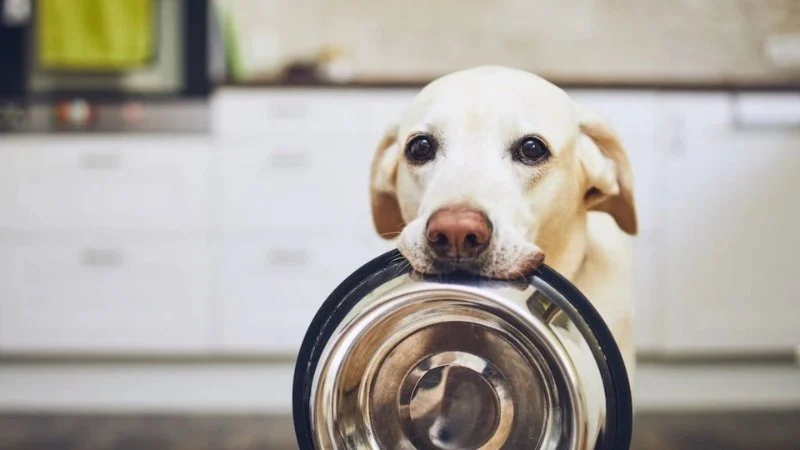
How Much Should You Feed Your Pet? Portion Guide by Age & Breed
- 1 - Understanding Pet Nutrition
- 2 - Factors That Influence Your Pet’s Diet
- 3 - Feeding Guide for Different Pet Ages
- 4 - Portion Sizes by Breed
- 5 - Common Mistakes in Pet Feeding
- 6 - Real-Life Example: Managing Portion Control
1. Understanding Pet Nutrition
Feeding your pet the right amount of food is essential for their health and well-being. Just like humans, pets need a balanced diet to stay healthy, but the amount and type of food vary depending on factors like age, breed, and activity level. Pet nutrition is a science that takes into account protein, fat, carbohydrates, vitamins, and minerals, all of which are vital to a pet’s development and daily energy needs.
Understanding the basics of pet nutrition and portion control is key to ensuring that your pet maintains a healthy weight and gets the nutrients they need for a long, happy life. This guide will help you determine how much food to give your pet based on their specific requirements.
2. Factors That Influence Your Pet’s Diet
When it comes to feeding your pet, there isn’t a one-size-fits-all approach. Several factors influence how much food your pet needs:
2.1 Age
Age plays a critical role in determining how much food your pet needs. Puppies and kittens have higher energy requirements to support growth, while senior pets may require fewer calories to maintain their health. As your pet ages, their metabolism slows, and their activity levels may decrease, affecting their dietary needs.

VCA McCormick Ranch Animal Hospital and Emergency Center
ScottsdaleMaricopa CountyArizona
10380 Hayden Rd, Scottsdale, AZ 85258, USA
2.2 Breed
Different breeds have different activity levels, metabolism, and size, all of which impact their caloric needs. Large breeds like Great Danes require more food than smaller breeds like Chihuahuas. Additionally, some breeds may be more prone to obesity, so portion control becomes even more important.
2.3 Activity Level
If your pet is highly active, they will need more calories to fuel their exercise. Dogs that participate in regular play, agility, or working dogs often need larger portions of food. On the other hand, a less active pet may require fewer calories to maintain a healthy weight.
2.4 Health Conditions
Pets with certain health conditions, such as obesity, diabetes, or kidney disease, may have special dietary needs. Always consult with your veterinarian to determine the appropriate portion size and type of food for pets with specific health concerns.
3. Feeding Guide for Different Pet Ages
Your pet's nutritional needs change as they age. Here’s how to adjust their portion sizes and diet based on their life stage:
3.1 Puppies and Kittens
Young pets require more calories and nutrients to support their growth and development. At this stage, it's important to feed them high-quality food designed for puppies or kittens. They should be fed more frequently, typically 3-4 times per day, and the portion size will vary based on their breed and size.
3.2 Adult Pets
Once your pet reaches adulthood, their growth slows down, and their food intake will need to be adjusted. Most adult pets do well with 2 meals per day, but portion sizes should be based on their breed, weight, and activity level. At this stage, balanced nutrition is essential to maintain optimal health and weight.
3.3 Senior Pets
Senior pets often have lower energy needs and may become less active. As a result, they may require fewer calories to prevent obesity. Senior pet foods are often formulated with fewer calories, as well as additional nutrients to support joint health and cognitive function. Portion control becomes increasingly important in preventing age-related health issues.
4. Portion Sizes by Breed
Breed plays a significant role in determining how much food your pet needs. Larger breeds like Golden Retrievers and German Shepherds typically require more food than smaller breeds like Dachshunds and Pugs. Below is a general guideline for portion sizes based on breed:
4.1 Small Breeds
Small dogs, like Chihuahuas and Yorkshire Terriers, have faster metabolisms but less body mass, so they generally require fewer calories. On average, small dogs need about 25-30 calories per pound of body weight per day. This means that a 10-pound dog may need around 250-300 calories daily.
4.2 Medium Breeds
Medium-sized dogs, such as Beagles or Bulldogs, need around 20 calories per pound of body weight. A 30-pound dog, for example, might require 600 calories per day. Medium breeds may also need larger portions of food to maintain their energy and muscle mass.
4.3 Large Breeds
Large dogs, like Labradors or German Shepherds, require more food to support their size and activity levels. They typically need about 15-20 calories per pound of body weight. A 70-pound dog may need between 1,050 and 1,400 calories daily.
5. Common Mistakes in Pet Feeding
Many pet owners make mistakes when it comes to portion control and feeding habits. Here are some common mistakes to avoid:
5.1 Overfeeding
One of the most common mistakes pet owners make is overfeeding. While it’s tempting to give your pet extra food or treats, this can lead to obesity, which can cause other health issues such as joint problems and diabetes.
5.2 Not Adjusting for Life Stage
Failing to adjust your pet’s diet as they age can lead to overfeeding or underfeeding. Be sure to modify their portions based on whether they are a puppy, adult, or senior pet.
5.3 Feeding Low-Quality Food
Feeding your pet low-quality or inappropriate food can lead to nutritional imbalances. It’s important to choose food that’s tailored to your pet’s specific age, breed, and health needs. Consult your veterinarian for recommendations on the best food for your pet.
6. Real-Life Example: Managing Portion Control
Take the case of Sarah, who had a 4-year-old Beagle named Bella. Bella was always hungry and tended to beg for food between meals. Sarah initially overfed her, thinking that more food would make Bella happier. However, after noticing that Bella was gaining weight, Sarah consulted her vet for advice.
The vet explained that Bella’s portions needed to be adjusted to match her age, activity level, and breed size. After following the recommended portion guide, Bella lost the extra weight and became much more energetic. Sarah learned the importance of portion control, and Bella is now healthier and happier.





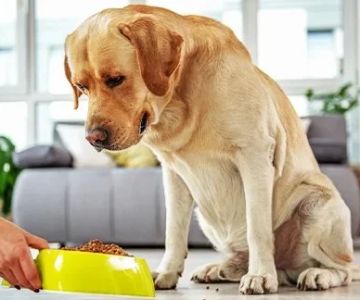

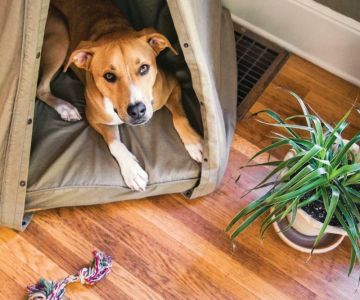
 1214 Central Store0.0 (0 reviews)
1214 Central Store0.0 (0 reviews) Burlington Pet Hospital4.0 (118 reviews)
Burlington Pet Hospital4.0 (118 reviews) ArkVets4.0 (426 reviews)
ArkVets4.0 (426 reviews)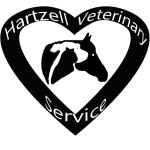 Hartzell Veterinary Service: Charles W. Hartzell, DVM and Sue Ann Hartzell, DVM4.0 (105 reviews)
Hartzell Veterinary Service: Charles W. Hartzell, DVM and Sue Ann Hartzell, DVM4.0 (105 reviews) Noah's Ark Animal Hospital4.0 (163 reviews)
Noah's Ark Animal Hospital4.0 (163 reviews) Jasper Pet Clinic4.0 (285 reviews)
Jasper Pet Clinic4.0 (285 reviews) Transitioning Training Methods as Pet Ages: Adapting Techniques for Senior Pets
Transitioning Training Methods as Pet Ages: Adapting Techniques for Senior Pets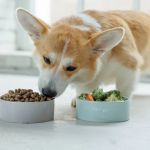 How to Read & Understand Pet Nutrition Labels for Your Pet's Health
How to Read & Understand Pet Nutrition Labels for Your Pet's Health How to Choose the Right Pet Supplement Brand: Essential Tips for Pet Owners
How to Choose the Right Pet Supplement Brand: Essential Tips for Pet Owners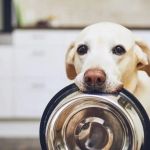 How Much Should You Feed Your Pet? Portion Guide by Age & Breed
How Much Should You Feed Your Pet? Portion Guide by Age & Breed How to Create a Pet Health Journal: Metrics to Track for Better Pet Care
How to Create a Pet Health Journal: Metrics to Track for Better Pet Care What Breed-Specific Health Issues You Should Be Aware Of
What Breed-Specific Health Issues You Should Be Aware Of